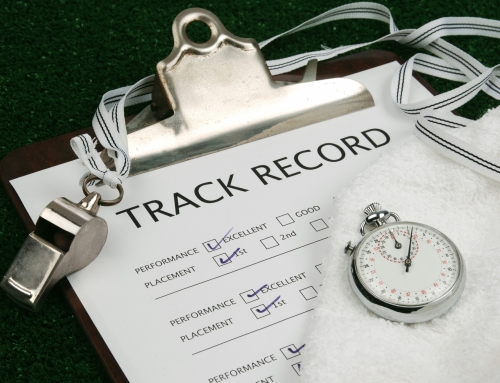1. Listen To Your Body
Without a doubt, “listening to your body” is number one on my must-do list of training tips for older runners. However, I believe all runners ought to be doing this regardless of age. Young or aging, new or experienced, runners need to make a concerted effort to listen to what their bodies are communicating to them. However, for the aging runner, it’s especially critical for continued success and avoiding injuries that could derail training.
So, what exactly does it mean to “Listen to your Body”? First and foremost, it’s really just about having an awareness of what or how your body is feeling in the moment as you engage in exercise. Second, It’s about using this real-time information to assess your current physical status relative to what you consider to be “your” norm. It’s another way of saying that you are in “tune” with your current physical status. In other words, you are constantly aware of how you are feeling and what you are feeling. Ideally, you are periodically and methodically assessing your body throughout your workout.
Self Assessment
You will want to perform a quick self assessment while running. In the beginning for example, you may ask yourself questions such as: Are my calf muscles or achilles tendons feeling tighter than usual? Are my shoulders tight or hunched? Feeling really thirsty? Am I breathing harder than usual for the pace I am running? Is that a hot spot I feel on my heel? What’s that sharp pain I’m feeling on the lateral side of my knee? Am I slightly favoring my left side with every foot strike? Start with your head and neck and work your way down to your toes. Eventually you’ll do this without even thinking.
You easily recognize when you feel good and everything seems right vs. when you do not. It’s more about developing your ability to discern normal soreness, tension, fatigue, or discomfort from a potentially brewing injury. More importantly, you will want to learn to recognize and interpret those gray areas along the spectrum between feeling good and feeling bad on a run. Sometimes you may need to adjust your workout on the fly. That’s why a proper warm up is important. Finally, It’s about honing your ability to feel or sense your status and condition at all times, and not just when you are running or exercising.
Older Runners Need To Take Action
The information we derive from self assessment and awareness is just one side of the same coin. Let’s be honest, the feedback is really kind of meaningless if it isn’t appropriately acted upon in a timely manner, especially when things really aren’t feeling normal, right? You need to know when not push it, or when to call it a day and perhaps cut the session short. It may also mean knowing you need to have an extra recovery day, and having the confidence to take it, even though your schedule says otherwise. As runners, sometimes we are our own worst enemy. Frankly, that’s where having a personal coach really comes in handy. If you are communicating with your coach, they will tell you when you need more recovery time. Think of this process of bodily assessment as your personal diagnostic “check engine” light, meaning that when its “on” you’ve now been alerted to something that’s not to be ignored. You want to nip possible issues in the bud, not let them linger and fester into full-fledged problems that will hinder your training.
2. Don’t Skimp On Your Recovery Time
Providing yourself with adequate recovery time between work sessions is especially important for the older runner. It can mean the difference between making steady progress or incurring an overuse injury. The reality is that it goes hand-in-hand with “Listening to your body”. Think of it this way, how will you know how much recovery time you need post-workout if you aren’t “listening” to the subtle signals your body is communicating to you?
As an aging runner, you really need to allow yourself plenty of recovery time between “quality” work sessions. Providing adequate recovery between higher effort sessions is extremely important to getting the most out of your training, staying healthy and injury free. Many runners let their training schedule strictly dictate when and how much rest and recovery they take without taking into account the feedback from their bodies. It’s unfortunate that so many runners treat their training schedules as if they were written in stone. You have to ask yourself, does this sound like a good approach?
A Different Perspective For Older Runners
To put it in perspective, think of your workout as not being “completed”… until after you have concluded your recovery day(s). This may require one, two or maybe more days depending on your individual characteristics and the workout’s intensity or volume. Remember, the workout itself does not make you faster, stronger or increase your stamina. In fact, it breaks the body down. In doing so, it serves as a stimulus and catalyst for the re-growth and adaptation of damaged tissue. It’s during the days and weeks following a series of correctly applied stressors (i.e. workouts) that your body regenerates itself and super-compensates so that it can more readily handle that “new” increased workload you’ve been imposing on your body.
It Takes Older Runners Longer
As an older runner myself who turned 60 last year, I can attest to the fact that it takes me much longer to recover from a hard session than it did just a few years ago. The same goes for minor tweaks and injuries. It’s also well known that old injuries have a way of popping back up. This usually happens when you’ve increased volume or intensity suddenly. This can also occur when you start doing something new or make sudden changes to your routine. It’s also doesn’t help matters when you don’t allow yourself enough recovery time before the next quality workout.
I can’t remember where I heard or read it, but it’s something I do agree with. It went something like: “The most significant difference between an older runner and a younger runner is the amount of recovery time needed”. I also feel it’s one of the most ignored truisms when it comes to older runners.
3. Use A Baby Steps Approach When Increasing Volume Or Intensity
Older runners need to be especially cautious and measured with any increases in workload (especially if you are new to running or coming back from an illness or injury). I like to call this the “baby steps” approach, because it illustrates the concept so well. The concept is simple. It’s about taking “little” steps instead of big leaps toward your training goals. It’s also about giving your body adequate time to adjust and adapt to the new pace or boost in volume before making the next increase.
Sudden changes and increases often gets runners into trouble. Older runners in particular should be cautious. Particularly when developing your base volume and when you enter the sharpening or race specific phase of training where speed and intensity is the main focus. Aging runners also need to avoid increasing both volume and intensity at the same time. Increase one or the other, but never both simultaneously.
For Older Runners – Too Much Too Soon?
Older runners need to be conservative when adding mileage (volume) to runs, adding additional runs (frequency), or when upping the pace (intensity) of their intervals and repeats. Again, this is not new advice. Yet, so many runners seemingly forget this golden rule: “Don’t do too much….too soon”! That means not adding too much volume (mileage) nor too much intensity (speed) within a short window of time.
It’s all about a “gradual” and “moderately” applied progression. It’s about taking little bites, not big chunks. Remember, each new increase is a new stress imposed on the body. If this stress is properly applied, the body will respond by adapting to the new stress. Unfortunately, it takes a certain amount of discipline to “hold back” when you are feeling particularly good on a run.
Unfortunately, in sports we are often mistakenly taught that we should go all-out every workout or every run. We get caught up into trying to go a little further or a bit faster than yesterday’s run. In reality, we want to leave these all-out expenditures of effort for our milestone races. Fact is, we want to do the least amount of work possible to achieve the desired adaptations, which will provide the performance that is sought.





